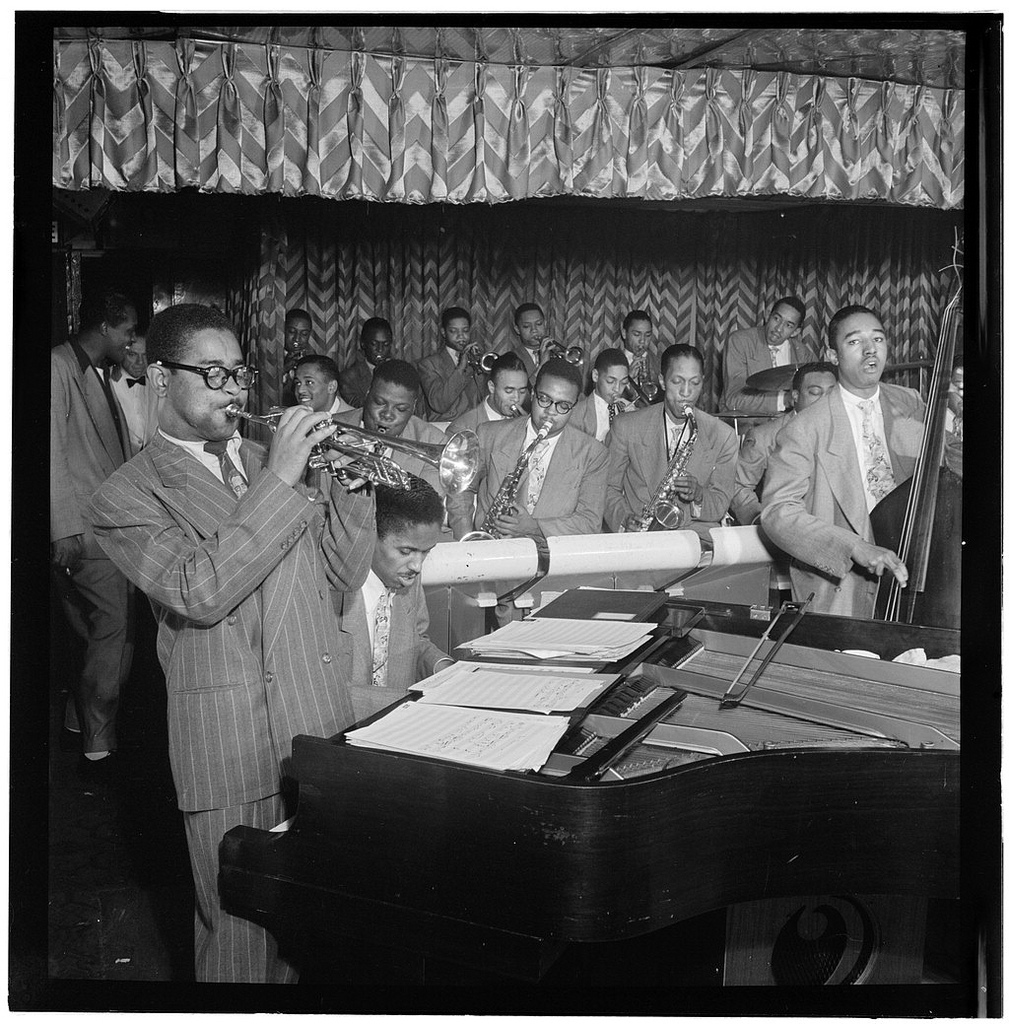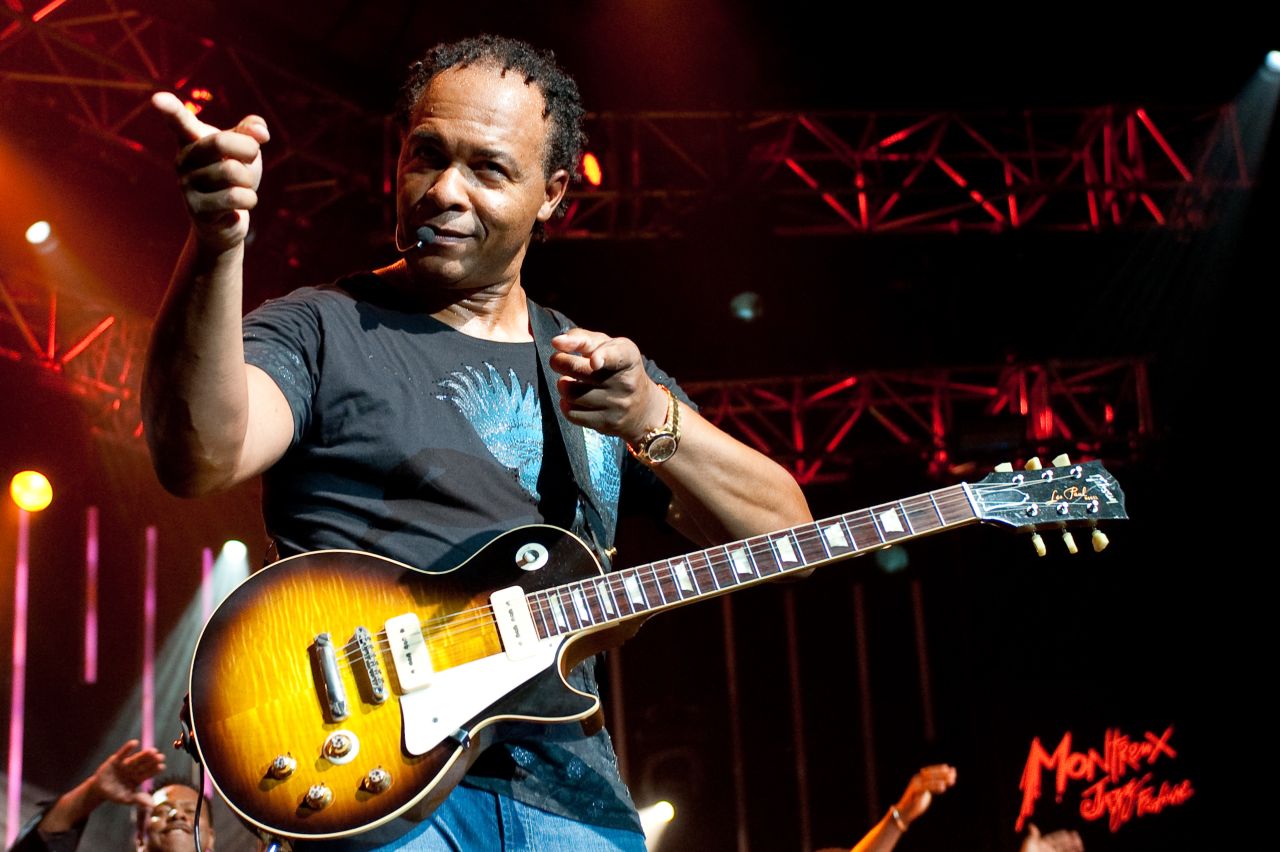|
Free Ride (album)
''Free Ride'' is an album by trumpeter Dizzy Gillespie which was composed, arranged and conducted by Lalo Schifrin, recorded in 1977 and released on the Pablo label.Dizzy Gillespie discography accessed April 18, 2012 The album represents the first collaboration between the two since '''' in 1962. Reception The review stated "The things that make Schifrin an anathema to the diehards -- the huge orchestras, the pop and soul riffs, the general air of over the top theatricality -- are all over 1977's '' ...[...More Info...] [...Related Items...] OR: [Wikipedia] [Google] [Baidu] |
Dizzy Gillespie
John Birks "Dizzy" Gillespie (; October 21, 1917 – January 6, 1993) was an American jazz trumpeter, bandleader, composer, educator and singer. He was a trumpet virtuoso and improviser, building on the virtuosic style of Roy Eldridge but adding layers of harmonic and rhythmic complexity previously unheard in jazz. His combination of musicianship, showmanship, and wit made him a leading popularizer of the new music called bebop. His beret and horn-rimmed spectacles, scat singing, bent horn, pouched cheeks, and light-hearted personality provided one of bebop's most prominent symbols. In the 1940s, Gillespie, with Charlie Parker, became a major figure in the development of bebop and modern jazz. He taught and influenced many other musicians, including trumpeters Miles Davis, Jon Faddis, Fats Navarro, Clifford Brown, Arturo Sandoval, Lee Morgan, Chuck Mangione, and balladeer Johnny Hartman. He pioneered Afro-Cuban jazz and won several Grammy Awards. Scott Yanow wrote, "Dizzy ... [...More Info...] [...Related Items...] OR: [Wikipedia] [Google] [Baidu] |
Conducting
Conducting is the art of directing a musical performance, such as an orchestral or choral concert. It has been defined as "the art of directing the simultaneous performance of several players or singers by the use of gesture." The primary duties of the conductor are to interpret the score in a way which reflects the specific indications in that score, set the tempo, ensure correct entries by ensemble members, and "shape" the phrasing where appropriate. Conductors communicate with their musicians primarily through hand gestures, usually with the aid of a baton, and may use other gestures or signals such as eye contact. A conductor usually supplements their direction with verbal instructions to their musicians in rehearsal. The conductor typically stands on a raised podium with a large music stand for the full score, which contains the musical notation for all the instruments or voices. Since the mid-19th century, most conductors have not played an instrument when conducting, ... [...More Info...] [...Related Items...] OR: [Wikipedia] [Google] [Baidu] |
Lee Ritenour
Lee Mack Ritenour ( ; born January 11, 1952) is an American jazz guitarist who has been active since the late 1960s. Biography Ritenour was born on January 11, 1952, in Los Angeles, California, United States. At the age of eight he started playing guitar and four years later decided on a career in music. When he was 16 he played on his first recording session with the Mamas & the Papas. He developed a love for jazz and was influenced by guitarist Wes Montgomery. At the age of 17 he worked with Lena Horne and Tony Bennett. He studied classical guitar at the University of Southern California. 1976–1988 Ritenour's solo career began with the album ''First Course'' (1976), a good example of the jazz-funk sound of the 1970s, followed by ''Captain Fingers'', ''The Captain's Journey'' (1978), and ''Feel the Night'' (1979). In 1979, he "was brought in to beef up" one of Pink Floyd's ''The Wall''s heaviest rock numbers, "Run Like Hell". He played "uncredited rhythm guitar" on "One of ... [...More Info...] [...Related Items...] OR: [Wikipedia] [Google] [Baidu] |
Ray Parker Jr
Ray Erskine Parker Jr. (born May 1, 1954) is an American musician, singer, songwriter, and record producer. As a solo performer, he wrote and performed the theme song to the 1984 film ''Ghostbusters''. Previously, Parker achieved a US top-10 hit in 1982 with " The Other Woman". He also performed with his band, Raydio, and with Barry White. Early life Parker was born in Detroit, Michigan, to Venolia Parker and Ray Parker Sr. He has two siblings: his brother Opelton and his sister Barbara. Parker attended Angel Elementary School where his music teacher, Afred T Kirby, inspired him to be a musician at age six playing the clarinet. Parker attended Cass Technical High School in the 10th grade. Parker is a 1971 graduate of Detroit's Northwestern High School. He was raised in the Dexter-Grand Boulevard neighborhood on its West Side. Parker attended college at Lawrence Institute of Technology. Music career Early work Parker gained recognition during the late 1960s as a member o ... [...More Info...] [...Related Items...] OR: [Wikipedia] [Google] [Baidu] |
Synthesizer
A synthesizer (also spelled synthesiser) is an electronic musical instrument that generates audio signals. Synthesizers typically create sounds by generating waveforms through methods including subtractive synthesis, additive synthesis and frequency modulation synthesis. These sounds may be altered by components such as filters, which cut or boost frequencies; envelopes, which control articulation, or how notes begin and end; and low-frequency oscillators, which modulate parameters such as pitch, volume, or filter characteristics affecting timbre. Synthesizers are typically played with keyboards or controlled by sequencers, software or other instruments, and may be synchronized to other equipment via MIDI. Synthesizer-like instruments emerged in the United States in the mid-20th century with instruments such as the RCA Mark II Sound Synthesizer, RCA Mark II, which was controlled with Punched card, punch cards and used hundreds of vacuum tubes. The Moog synthesizer, d ... [...More Info...] [...Related Items...] OR: [Wikipedia] [Google] [Baidu] |
Electric Piano
An electric piano is a musical instrument which produces sounds when a performer presses the keys of a piano-style musical keyboard. Pressing keys causes mechanical hammers to strike metal strings, metal reeds or wire tines, leading to vibrations which are converted into electrical signals by magnetic pickups, which are then connected to an instrument amplifier and loudspeaker to make a sound loud enough for the performer and audience to hear. Unlike a synthesizer, the electric piano is not an electronic instrument. Instead, it is an electro-mechanical instrument. Some early electric pianos used lengths of wire to produce the tone, like a traditional piano. Smaller electric pianos used short slivers of steel to produce the tone (a lamellophone with a keyboard & pickups). The earliest electric pianos were invented in the late 1920s; the 1929 ''Neo- Bechstein'' electric grand piano was among the first. Probably the earliest stringless model was Lloyd Loar's Vivi-Tone Clavier. A few ... [...More Info...] [...Related Items...] OR: [Wikipedia] [Google] [Baidu] |
Piano
The piano is a stringed keyboard instrument in which the strings are struck by wooden hammers that are coated with a softer material (modern hammers are covered with dense wool felt; some early pianos used leather). It is played using a keyboard, which is a row of keys (small levers) that the performer presses down or strikes with the fingers and thumbs of both hands to cause the hammers to strike the strings. It was invented in Italy by Bartolomeo Cristofori around the year 1700. Description The word "piano" is a shortened form of ''pianoforte'', the Italian term for the early 1700s versions of the instrument, which in turn derives from ''clavicembalo col piano e forte'' (key cimbalom with quiet and loud)Pollens (1995, 238) and ''fortepiano''. The Italian musical terms ''piano'' and ''forte'' indicate "soft" and "loud" respectively, in this context referring to the variations in volume (i.e., loudness) produced in response to a pianist's touch or pressure on the keys: the grea ... [...More Info...] [...Related Items...] OR: [Wikipedia] [Google] [Baidu] |
Sonny Burke
Joseph Francis "Sonny" Burke (March 22, 1914 – May 31, 1980) was an American musical arranger, composer, Big Band leader and producer. In 1937, he graduated from Duke University, where he had formed and led the jazz big band known as the Duke Ambassadors. Background During the 1930s and 1940s, Burke was a big band arranger in New York City, worked with Sam Donahue's band, and during the 1940s and 1950s worked as an arranger for the Charlie Spivak and Jimmy Dorsey bands, among others. In 1955, he wrote, along with Peggy Lee, the songs to Disney's ''Lady and the Tramp''. He also wrote songs with John Elliot for Disney's ''Toot, Whistle, Plunk and Boom'', which won the 1953 Oscar for Best Short Subject (Cartoons).Cotter, Bill, ''The Wonderful World of Disney Television: A Complete History'', p. 549, Hyperion, 1997. He wrote the music for number of popular songs, including " Black Coffee" and "Midnight Sun", co-written with jazz vibraphonist Lionel Hampton. The song's lyrics ... [...More Info...] [...Related Items...] OR: [Wikipedia] [Google] [Baidu] |
Jim Horn
James Ronald Horn (born November 20, 1940) is an American saxophonist, woodwind player, and session musician. Biography Horn was born in Los Angeles, and after replacing saxophonist Steve Douglas in 1959, he toured with member Duane Eddy for five years, playing sax and flute on the road, and in the recording studio. Along with Bobby Keys and Jim Price he became one of the most in-demand horn session players of the 1970s and 1980s. Horn played on solo albums by three members of the Beatles, forming a long association with George Harrison after appearing at the latter's Concert for Bangladesh benefit in 1971. Horn toured with John Denver on and off from 1978 to 1993. He also played with Denver in concert occasionally after the Wildlife Concert in 1995. He played flute on the original studio recording of "Going Up the Country" by Canned Heat, reproduced in the film ''Woodstock''. Horn played flute and saxophone on the Beach Boys' album ''Pet Sounds'', and played flute on the Rol ... [...More Info...] [...Related Items...] OR: [Wikipedia] [Google] [Baidu] |
Saxophone
The saxophone (often referred to colloquially as the sax) is a type of single-reed woodwind instrument with a conical body, usually made of brass. As with all single-reed instruments, sound is produced when a reed on a mouthpiece vibrates to produce a sound wave inside the instrument's body. The pitch is controlled by opening and closing holes in the body to change the effective length of the tube. The holes are closed by leather pads attached to keys operated by the player. Saxophones are made in various sizes and are almost always treated as transposing instruments. Saxophone players are called '' saxophonists''. The saxophone is used in a wide range of musical styles including classical music (such as concert bands, chamber music, solo repertoire, and occasionally orchestras), military bands, marching bands, jazz (such as big bands and jazz combos), and contemporary music. The saxophone is also used as a solo and melody instrument or as a member of a horn section in som ... [...More Info...] [...Related Items...] OR: [Wikipedia] [Google] [Baidu] |
Ernie Watts Ernest James Watts (born October 23, 1945) is an American jazz and rhythm and blues saxophonist who plays soprano, alto, and tenor saxophone. He has worked with Charlie Haden's Quartet West and toured with the Rolling Stones. On Frank Zappa's album ''The Grand Wazoo'' he played the "Mystery Horn", a straight-necked C melody |






